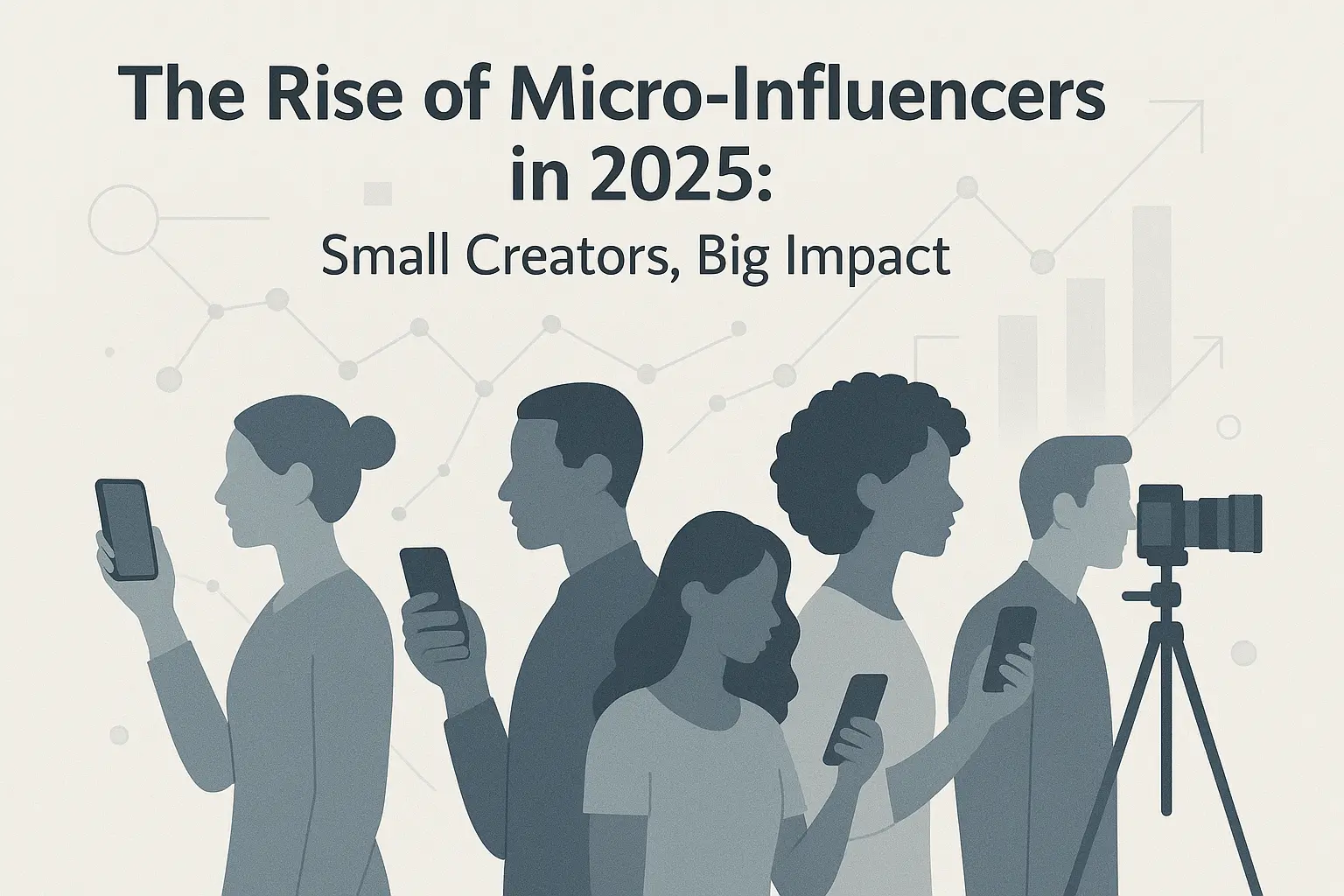
The Rise of Micro-Influencers in 2025
In the evolving world of digital marketing, 2025 marks a shift in influencer strategy. Brands are no longer chasing celebrities with millions of followers—they’re focusing on micro-influencers, creators with 10,000 to 100,000 followers.
Why? Because micro-influencers deliver authenticity, engagement, and conversions at a fraction of the cost. In this article, we’ll explore why micro-influencers are the new powerhouse of digital marketing, strategies for working with them, and how businesses can maximize ROI.
(Internal Link Idea: “Looking to scale your brand? Check out our [Performance Marketing Services].”)
What Are Micro-Influencers?
Micro-influencers are social media creators who:
- Have 10K–100K engaged followers.
- Focus on a specific niche (fashion, tech, food, fitness, finance, etc.).
- Maintain authentic relationships with their audience.
Unlike celebrity influencers, who often appear distant, micro-influencers create a personal connection. This authenticity is why their recommendations feel more like advice from a friend.
Why Micro-Influencers Outperform Celebrities
Higher Engagement Rates
Studies show micro-influencers have engagement rates 60% higher than macro-influencers. Their audiences are smaller, but far more interactive and loyal.
Cost-Effective Campaigns
Hiring a celebrity for a single post can cost ₹20–50 lakh+, while a micro-influencer might charge just ₹20,000–₹50,000 per campaign. The result? Better ROI.
Authentic Storytelling
Audiences trust creators who genuinely use and recommend products. Micro-influencers integrate products naturally into their lifestyle, making promotions relatable.
Niche Targeting
Micro-influencers specialize in niches like vegan food, gaming, skincare, or entrepreneurship. This means brands can reach a hyper-targeted audience—not just a broad fan base.
The Psychology of Trust in Influencer Marketing
People Trust People, Not Ads
Consumers are 92% more likely to trust recommendations from people than from traditional ads. Micro-influencers thrive because they act like peers, not marketers.
Community Over Popularity
Micro-influencers build communities, not just followings. Their audience feels like part of a conversation, not just a passive viewer.
Case Studies: Micro-Influencer Campaigns That Worked
- Glossier – Built a billion-dollar beauty brand by partnering with everyday creators instead of celebrities.
- Gymshark – Leveraged fitness micro-influencers to become a global fitness apparel giant.
- Local Cafés & Restaurants – Partnering with food bloggers who have just 15k followers, driving footfall and orders.
How Businesses Can Leverage Micro-Influencers
Identify the Right Influencers
Use tools like Upfluence, AspireIQ, or manual searches on Instagram/TikTok. Look beyond follower count—analyze engagement rate, audience demographics, and content quality.
Build Authentic Partnerships
Instead of one-off posts, collaborate on long-term campaigns. Allow influencers to create content in their voice for natural storytelling.
Diversify Platforms
Don’t just focus on Instagram. Explore TikTok, YouTube Shorts, and LinkedIn (for B2B niches). Each platform has unique influencer opportunities.
Track ROI and Analytics
Measure success via click-through rates (CTR), conversions, coupon code usage, and engagement metrics.
Challenges in Micro-Influencer Marketing
- Scalability – Working with many small influencers requires coordination.
- Fake Followers – Some influencers inflate numbers with bots. Always check authenticity.
- Consistency – Not all creators deliver professional-quality content.
- Measuring ROI – Tracking actual sales vs. engagement can be tricky.
Future of Micro-Influencer Marketing in 2025 and Beyond
- AI-Driven Influencer Selection – Tools will analyze data to match brands with ideal influencers.
- Video-First Campaigns – Short-form video will dominate on Reels, TikTok, and YouTube Shorts.
- Creator-Led E-commerce – Influencers will launch co-branded product lines with businesses.
- Integration with Paid Ads – User-generated content (UGC) will be repurposed into paid campaigns for better ROI.
Final Thoughts
Micro-influencers are no longer the “underdogs” of digital marketing—they are the backbone of high-ROI campaigns in 2025. Their authenticity, affordability, and niche targeting make them essential for brands of all sizes.
Businesses that adapt now will gain a competitive advantage, while those who ignore this trend risk falling behind.